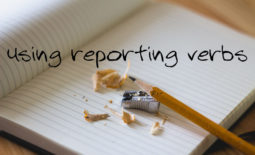Making your writing flow
Coherence and cohesion are two terms we use to describe good writing (and speaking). Coherence means that ideas are linked together in a logical order; while cohesion can be thought of as the unity that results when these links are deliberately made through certain techniques, such as repeating words or phrases.
Basically, coherent and cohesive writing flows. It’s not choppy. One idea just naturally progresses to another idea. Readers move through the text effortlessly. It’s all smooth sailing, from the first word to the last.
How do we achieve this magical feat?
Linguists often talk about something called the known-new contract. While this is a bit complicated, it boils down to helping out your reader by ordering your information so that known material is given before new material. Look at these two groups of sentences:
I.
Phrasal verbs are verb phrases formed from a verb and a particle. Discourse markers differ from phrasal verbs since they are formed from only one word. Transitive verbs have direct objects, while intransitive verbs don’t. Phrasal verbs can have direct objects, but they may also be intransitive. The particles in phrasal verbs may or may not have direct objects.
II.
Phrasal verbs are verb phrases formed from a verb and a particle. Particles may look like prepositions, but they actually aren’t the same. Unlike prepositions, particles don’t need to have an object. So, for example, in the phrasal verb, to hang out, out looks like a preposition, but it has no object. Therefore, it’s not a preposition. Particles may have objects, but unlike prepositions, they don’t have to have them.
Do you see how difficult the first group is to read? The subject of each sentence is different, and the sentences don’t flow. Each sentence provides you with new information that doesn’t relate to the preceding sentence.
On the other hand, in the second group, the ideas flow from sentence to sentence. It starts with the given information, a definition of phrasal verbs. But since the writer assumes the information about particles is new, she then moves on to define particles by comparing them to prepositions.
Obviously, determining what is “known” to your reader is important. In the writing above, I assumed that my reader would know the different parts of speech in English. If I were writing for beginners in English, I would start with more basic information. But whoever your audience is, the principle remains the same. Start with known information; then introduce new information. This helps make your writing coherent and cohesive … something your reader will definitely appreciate.
In my next post, I’ll talk about three simple ways to organize your written sentences following the known-new contract.




